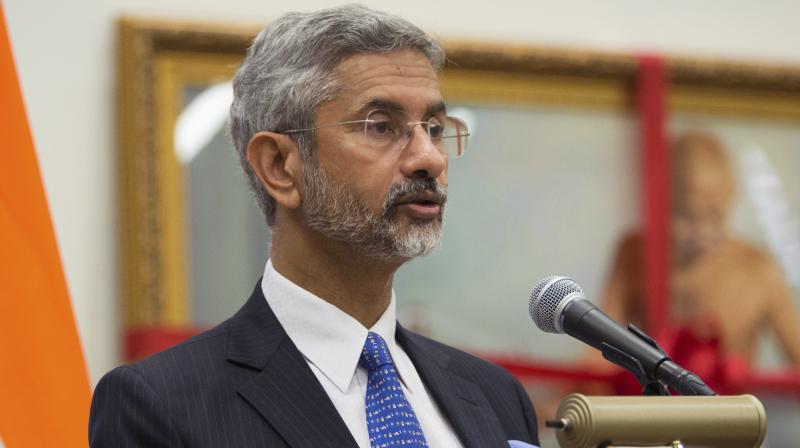
Indian soldiers carry arms: Jaishankar to Rahul's 'unarmed' jawans claim
In response to Congress leader Rahul Gandhi's questions on why Army personnel in Galwan Valley were sent "unarmed to martyrdom", External Affairs Minister S Jaishankar replied saying all Indian troops guarding the border with China always carry arms.

In response to Congress leader Rahul Gandhi’s questions on why Army personnel in Galwan Valley were sent “unarmed to martyrdom”, External Affairs Minister S Jaishankar replied on Thursday (June 18) saying all Indian troops guarding the border with China always carry arms.
The minister said armies of the two sides do not use firearms as per provisions of two bilateral agreements sealed in 1996 and 2005.
“Let us get the facts straight. All troops on border duty always carry arms, especially when leaving post. Those at Galwan on 15 June did so. Long-standing practice (as per 1996 & 2005 agreements) not to use firearms during face-offs,” Jaishankar tweeted.
Let us get the facts straight.
All troops on border duty always carry arms, especially when leaving post. Those at Galwan on 15 June did so. Long-standing practice (as per 1996 & 2005 agreements) not to use firearms during faceoffs. https://t.co/VrAq0LmADp
— Dr. S. Jaishankar (@DrSJaishankar) June 18, 2020
Earlier, Gandhi had questioned why Indian soldiers were sent “unarmed to martyrdom” in Ladakh and who was responsible for sending them towards danger. He also asked how China dared to kill Indian soldiers.
How dare China kill our UNARMED soldiers?
Why were our soldiers sent UNARMED to martyrdom?pic.twitter.com/umIY5oERoV
— Rahul Gandhi (@RahulGandhi) June 18, 2020
He had earlier asked defence minister Rajnath Singh in another tweet why he/the Centre had insulted the Indian Army by not naming China in his tweet about the standoff, and why the BJP-led government was still addressing rallies while soldiers were being martyred.
If it was so painful:
1. Why insult Indian Army by not naming China in your tweet?
2. Why take 2 days to condole?
3. Why address rallies as soldiers were being martyred?
4. Why hide and get the Army blamed by the crony media?
5. Why make paid-media blame Army instead of GOI? https://t.co/mpLpMRxwS7— Rahul Gandhi (@RahulGandhi) June 17, 2020
Twenty Indian Army personnel including a Colonel were killed in a violent clash between the two armies in Galwan Valley on Monday (June 15) evening.
The deaths on both sides happen to be the first set of casualties reported over the past four decades in the brewing conflict along the Line of Control.
China has not released any official casualty figures yet.
However, a senior reporter at The Global Times, which was a mouthpiece for the Beijing administration, said five Chinese soldiers were killed and 11 others were injured in the clashes with India at the Galwan Valley in Ladakh.
However, contrary to the above statement, news agency ANI quoted government sources as saying that sources had confirmed that China suffered 43 casualties, including those killed and seriously injured in the face-off.
China’s Foreign Ministry accused India of crossing the border first. Chinese Foreign Ministry spokesman Zhao Lijian also said Indian troops had crossed the Line of Actual Control twice.
Related news | Global media sees Galwan as China’s attempt to gain upper hand in Asia
He also accused India of “provoking and attacking Chinese personnel, which led to serious physical conflicts between the two sides”.
This incident comes after weeks of escalating tensions between India and China, which were triggered after an arm-to-arm combat between Indian and Chinese troops. This was followed by both nations bringing in more troops and recording increased activity along the area, including allegedly enhancing temporary defence infrastructure and weaponry, and upgrading a military airbase around 180 km from the Pangong Tso area.
A series of talks by both sides followed, after which the two nations resolved the dispute and began to disengage slowly. Army sources said the conflict in the Galwan Valley took place during the disengagement process.
The whole ordeal began when China opposed India’s plan to lay a key road in the Finger area around the Pangong Tso Lake and the construction of another road connecting the Darbuk-Shayok-Daulat Beg Oldie road in Galwan Valley.
The road in the Finger area in Pangong Tso is considered crucial for India to carry out patrol.
India stated firmly that it would not stall any border infrastructure projects in eastern Ladakh in view of China’s protests.


